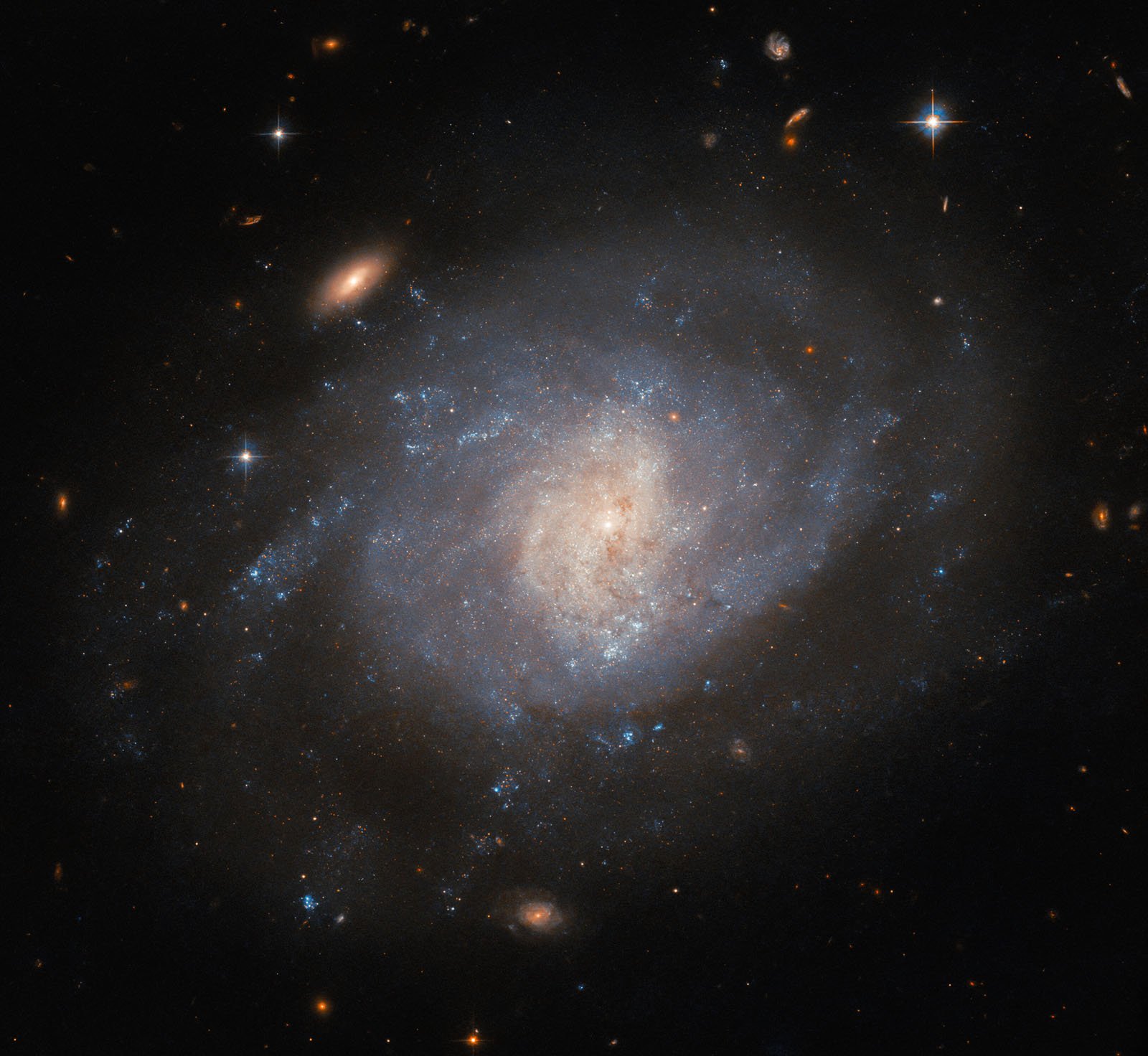
The Hubble Space Telescope continues to amaze with its images of deep space. The European Space Agency (ESA) recently released a pair of new galaxy photos that are a true feast for the eyes.
First up is a shot, seen above, of the galaxy NGC 941. Located about 55 million light-years from Earth, NGC 941 is an intermediate spiral galaxy with a diameter of about 55,000 light years.
The galaxy was first discovered in 1785 by William Herschel and has been a longtime target for amateur and professional astronomers alike. However, Hubble’s latest portrait closely examines something other than the beautiful galaxy itself, the supernova SN 2005ad.
This star explosion is special in part because it was not discovered by a professional stargazer but by distinguished amateur astronomer Kōichi Itagaki, who has personally discovered over 170 supernovae, per ESA.
SN 2005ad is a type II supernova and the reason why Hubble took a fresh look at NGC 941. Scientists are studying multiple hydrogen-rich supernovae to improve the understanding of the environments in which these sorts of supernovae occur.
NASA mentions that amateur astronomers such as Itagaki can sometimes spot supernova events before professionals armed with highly sophisticated equipment because supernova explosions occur so quickly, at least on a galactic timescale, that finding them requires more than excellent facilities and skill, it also requires luck. Given that Itagaki is nearing 200 supernovae discoveries, it’s clear that he has good fortune on top of his expertise.
Amateur astronomers are often behind supernovae discoveries, so there is an online system for people to report them, the Transient Name Server, enabling professionals to study them as soon as possible. “Time is truly of the essence,” ESA remarks. Itagaki’s report led to Hubble capturing the image above.

The other new image is of another galaxy, the barred spiral NGC 1385. The galaxy is about 30 million light-years away and a familiar Hubble subject. NGC 1385 was also featured as a Hubble Picture of the Week in 2021, although that photo was shot with different filters.
Filters don’t only change the colors in a space photo — images like this are actually shot in grayscale — but also change the details that are available because different cosmological events are easier to see in different wavelengths. In NGC 1385’s case, the filter swap has resulted in a dramatically different-looking galaxy.

The European Space Agency explains:
It is understandable to be a bit confused as to how the same galaxy, imaged twice by the same telescope, could be represented so differently in two different images. The reason is that — like all powerful telescopes used by professional astronomers for scientific research — Hubble is equipped with a range of filters. These highly specialized components have little similarity to filters used on social media: those software-powered filters are added after the image has been taken, and cause information to be lost from the image as certain colors are exaggerated or reduced for aesthetic effect. In contrast, telescope filters are pieces of physical hardware that only allow very specific wavelengths of light to enter the telescope as the data are being collected. This does cause light to be lost, but means that astronomers can probe extremely specific parts of the electromagnetic spectrum. This is very useful for a number of reasons; for example, physical processes within certain elements emit light at very specific wavelengths, and filters can be optimized to these wavelengths.
As is always the case with Hubble’s beautiful photos, there is a scientific purpose too. In this case, NGC 1385 has been imaged as part of the Physics at High Angular resolution in Nearby GalaxieS (PHANGS) mission, which aims to “build the first astronomical dataset charting the connections between young stars and cold molecular gas throughout a diversity of galactic environments.”
